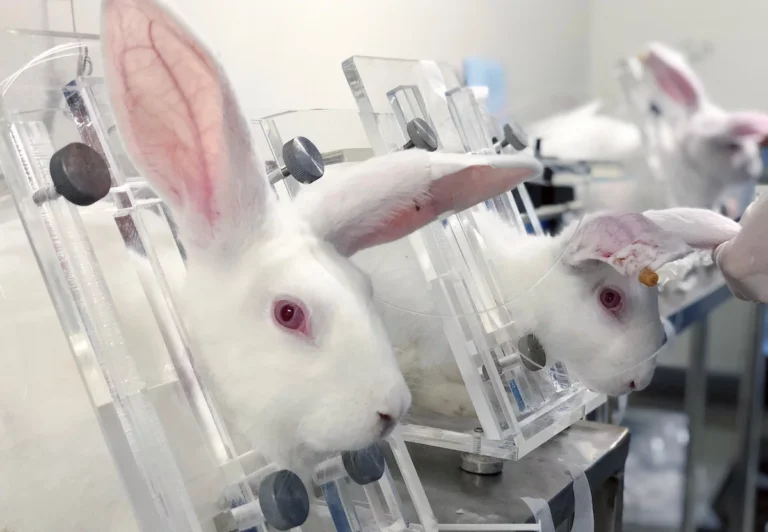
The Journey to End Animal Testing Starts with a Giant Step at the FDA
FDA Commissioner initiated off ramping of animal testing at the agency to improve human health, spare animals, and bolster a humane economy
By Zaher Nahle and Tamara Drake
It is hard to overstate the importance of the historic announcement made yesterday by the new FDA commissioner, Marty Makary, on phasing out animal testing, starting with a selected class of drugs and therapeutics. This consequential decision, supported by virtue and science, marks a departure from an archaic paradigm centered on animal testing for evaluating the safety and efficacy of pharmaceuticals. That construct, a derivative of a 1938 federal law that required animal testing for any screening of new drugs, was seriously challenged only when the Center for a Humane Economy, Animal Wellness Action, and their partners initiated the FDA Modernization Act in 2021.
Makary undoubtedly was cognizant of that legislative push, with a coalition of animal welfare, patient advocacy, biotech, and even some pharmaceutical companies pressing the case for reform. The goal of that legislation was clear-headed: to eliminate the animal-testing mandate that had been in place with the enactment of the Federal Food, Drug and Cosmetic Act during the Great Depression era.
For decades, the FDA has been dismissive of calls to evolve and to embrace 21st-century technologies that outperform animal testing in investigating the safety and efficacy of drugs. Makary saw the rising tide of momentum, including the overwhelming support of the FDA Modernization Act 2.0. And only a few days in office, Makary did what his predecessors shied away from doing for years — recognizing the dire need for human-relevant methodologies as the foundation of the drug discovery process at the premier regulatory agency in the United States, promising to swap in those methods for animal tests.
Today, 92% of drugs fail in human trials, even though they pass preclinical animal tests with flying colors. In addition, scores of perfectly safe and effective drugs are discarded only because they fail in animal tests. The amount of waste in the process is incalculable. Case in point, urology drugs have a dismal success rate (only 4% are approved after entering clinical trials), followed by heart drugs (5%), cancer drugs (5%), and neurology drugs (6%). Failed oncology trials alone are estimated to cost $50-$60 billion annually. Makary’s decision is not only historic, but also ethical, evidence-based, and financially sound. It is also consistent with imperatives to give patients treatments and cures and to ratchet down the use of highly intelligent and cognitively complex primates, dogs, and other mammals.
Today, 92% of drugs fail in human trials, even though they pass preclinical animal tests with flying colors. In addition, scores of perfectly safe and effective drugs are discarded only because they fail in animal tests. The amount of waste in the process is incalculable.

The major policy change at the FDA offers relief for millions of patients in medical crisis. Indeed, the use of non-animal, human-relevant innovation in preclinical discovery is what the doctor ordered. The pivot to innovative, human-biology-based technologies is especially promising in these areas of health policy:
- Instances of life-threatening and complex disease domains with species relevance limitations, i.e., where no animal models exist due to the lack of a pharmacologically relevant comparison to humans.
- In the growing therapeutic areas of biologics, where therapies (e.g., immunotherapy, cell-therapy) are by design very human-specific — the use of animals there is misleading and scientifically unjustified. Of note, new non-animal based technologies referred to as NAMs (New Approach Methodologies) are the only relevant models for biologics. Biologics, in turn, are a class of medications generated from living cells, including our own human materials, and which, unlike traditional and synthetic drugs (common pharmaceuticals), can be more specific, effective, and targeted.
- For repurposed drugs or in instances where prior target modulation experience exists. Innovative technologies — like ones based on Artificial Intelligence or advanced cell models adopted now by the FDA — can speed up discovery and reduce drug development cost.

The major policy change at the FDA offers relief for millions of patients in medical crisis. Indeed, the use of non-animal, human-relevant innovation in preclinical discovery is what the doctor ordered.
In addition to the decisive nature of the new commissioner and his reputation as a reformist, numerous factors made this change possible. We examine them briefly here from the lens of the PESTEL analysis (Political, Economic, Sociological, Technological, Ecological, Legal and Environmental).
- Political. In the aftermath of the Covid-19 pandemic, questioning authority and the medical and scientific systems in place became a necessity. Legislators (and health agencies) became more open to challenging dogmas. In that post-COVID environment, there was a sense that the nation needed to move with more speed in addressing the diseases killing so many people. Process, bureaucracy, and old-school methods were a threat to social well-being. A new administration in place focused on reducing waste is another political factor.
- Economic. The jarring failure in drug development and the elevated cost of drug development — including prescription drug cost, due in large part to the cost of failure that is passed on to consumers — has reached an all-time high. This is now hurting every American. Markets respond to drug development successes and failures. And the stagnation in the discovery process also has reached an all-time high. Notably, upon the FDA announcement yesterday that it would begin phasing out animal testing for new drugs, Charles River’s stock dropped by 28%. The decision by the FDA is anticipated to significantly affect the conventional business model of companies like Charles River Labs, which provides preclinical laboratory services, including supplying animals for drug tests.
- Social. The pressure from advocates and concerned citizens around the world regarding the futile use of animals in research contributed to the climate of change we see taking place in the last few years (especially in the EU and the United States).
- Technological. The advanced technologies cannot be ignored anymore. Most animal disease models have little resemblance to the human diseases they were created to study. Federal agencies like the FDA, operating from an animal-centric “gold standard” since 1938, were easily co-opted to continue down the archaic path of animal testing but are now changing with new leadership.
- Ecological. The wide realization that reducing and eliminating animal testing has an impact on our environment and healthy living. This includes reducing criminal cases of animal smuggling, the danger of zoonotic transmission, and the overall devastating pressure on resources (e.g., land mass, water) generated by the demands of factory farming and unabated animal use in research.
- Legal. Legislation like FDAMA 2.0 (a U.S. law since 2022) and FDAMA 3.0 (as well as policy changes in Europe) were key triggers for what will be the domino effect we are witnessing at the FDA. FDAMA 2.0 amended outmoded regulatory statutes at the agency, broadening the options for drug developers to advance clinical investigations. In short, it enables sponsors seeking regulatory clearance for clinical trials to use NAMs in lieu of animal data.
Collectively these factors constituted, to varying degrees, the main drivers shaping the changes in policy regarding animal testing at the FDA. It is expected that this development at FDA will trigger a sea change across regulatory agencies, including at the EPA. Notably, the environmental agency announced this week that it would reinstitute its commitment to phase out animal testing within a decade.
In the end, profit motives, fierce and reflexive opposition to change, and industry capture of the FDA perpetuated the myth of the value of animal models in biomedical research and shortchanged the American public for decades. It appears that, at least at the FDA, change is coming. FDA Commissioner Makary has his work cut out for him, but if he persists with this plan, he may go down in history as the administrator who brought relief to millions of Americans, reduced futile animal testing in the regulatory process, and streamlined a prescription drug marketplace, which in 2023 was valued at $1,225.78 billion and, for better or worse, has been a centerpiece of health strategies across the globe.
Thank you for sticking with us in this fight. Will you support our work so we can continue to take on big fights for other animals?
Zaher Nahle, PhD, MPA, is the Senior Scientific Advisor for CHE and AWA. He received his MPA from Harvard University and his PhD in Physiology and Biophysics from Stony Brook University/Cold Spring Harbor Laboratory (joint prog.). He is an award-winning scientist, consultant and non-profit executive.
Tamara Drake is director of research and regulatory policy for the Center for a Humane Economy and Animal Wellness Action, focusing on the transition to 21st-century science grounded in human biology.